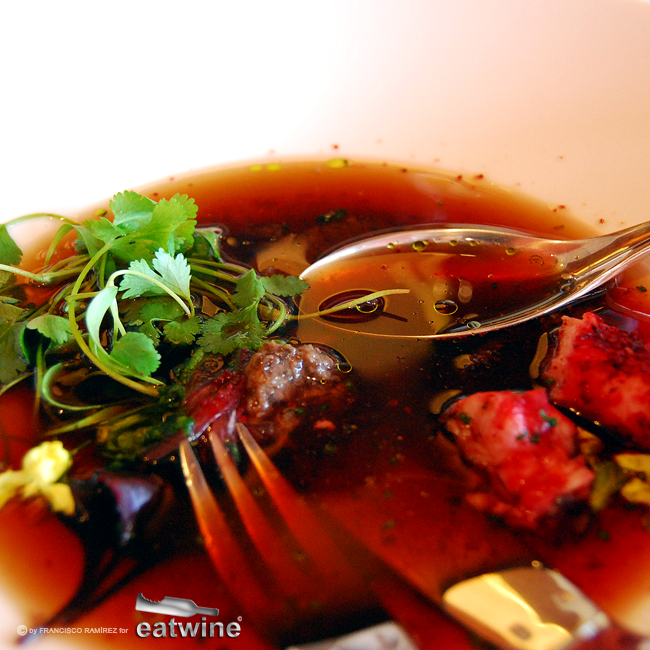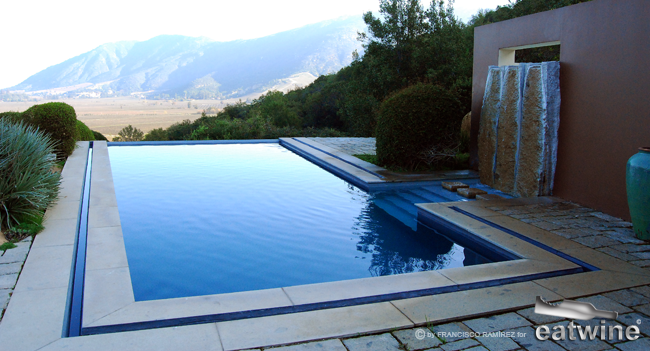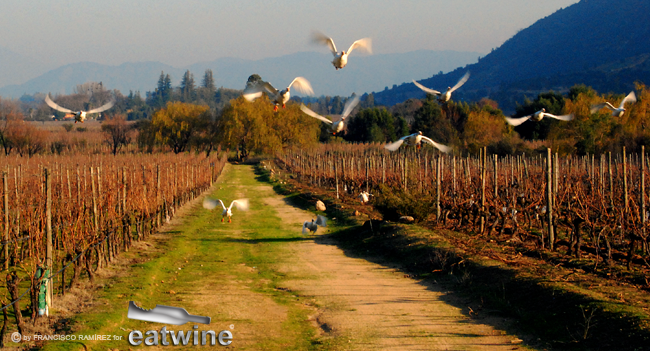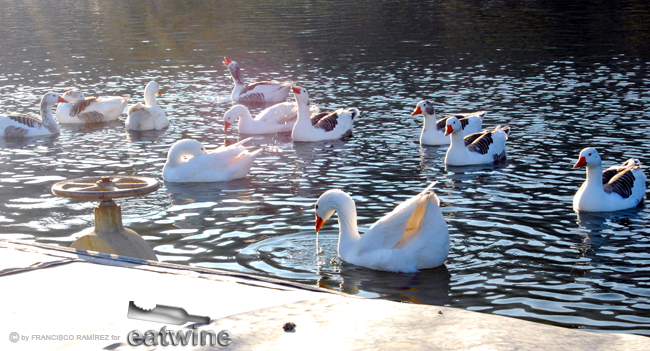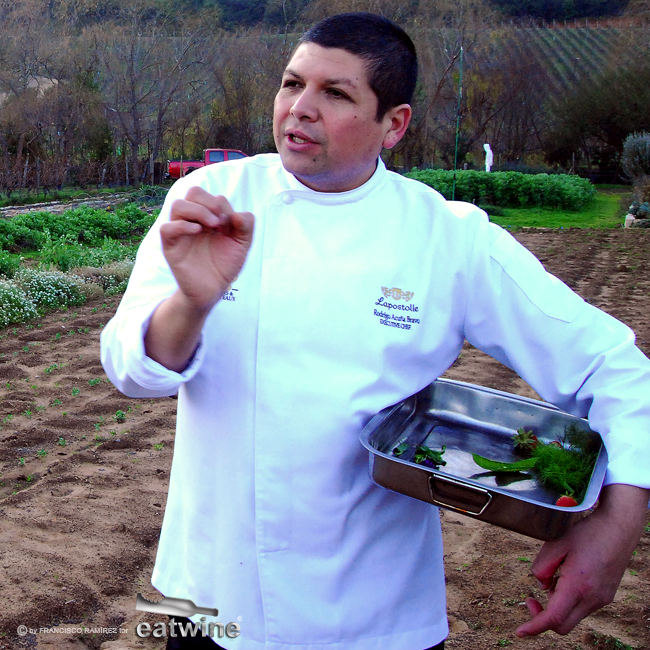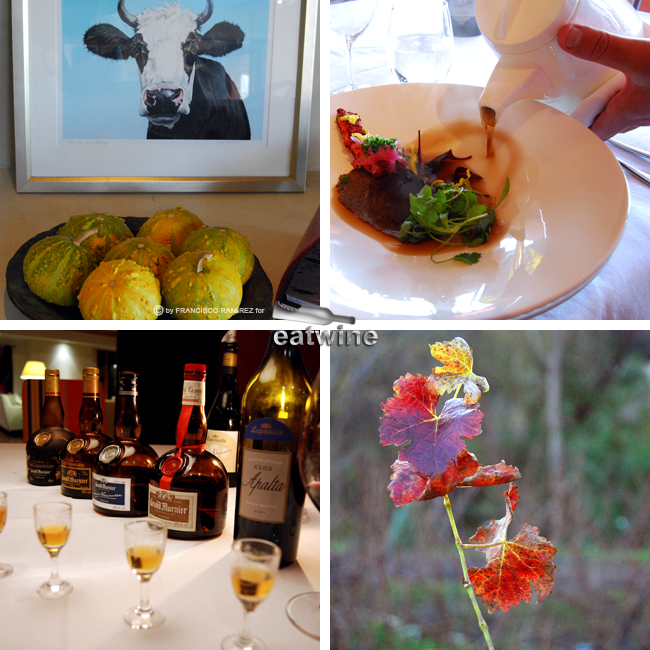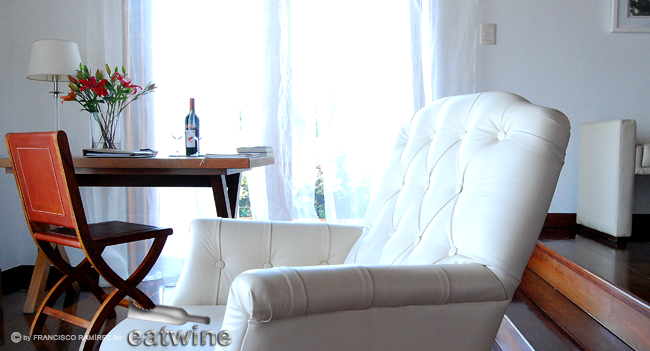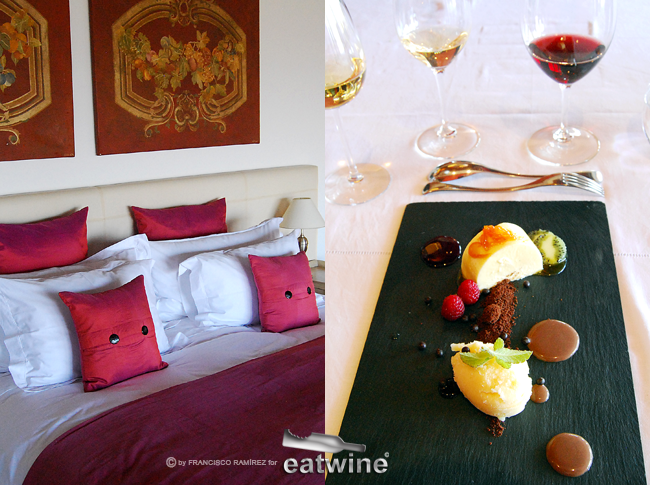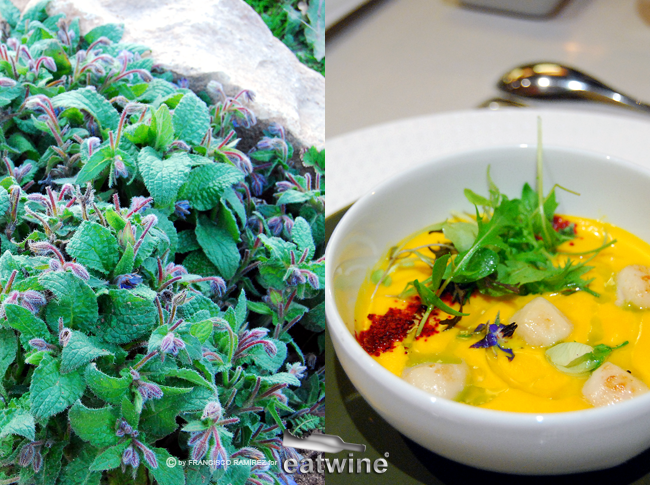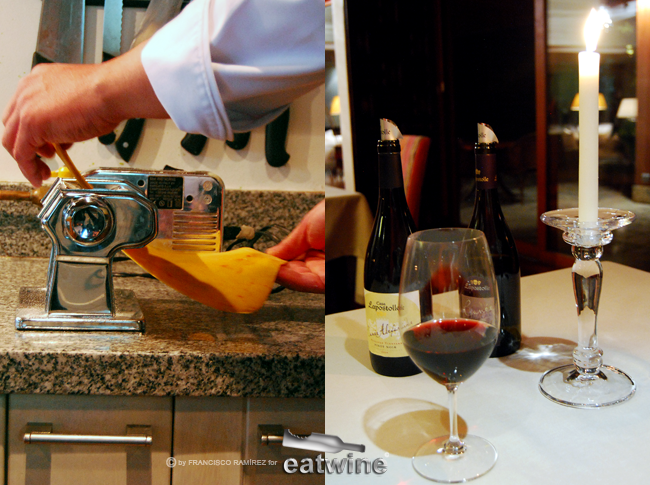In late June, we decided to ditch the smoggy air in Santiago and head south to the clean breezes of the Colchagua Valley for one of our last (adult) weekends as a couple Little One’s due date arrived. That Saturday in Colchagua was cold but clear, typical of central Mediterranean Chile in winter. We made record time driving, only two hours, on a nearly empty road. Between the cold and Chile playing in the World Cup at noon, nobody was venturing out. Of course, when we’d planned our weekend away, I had never even glanced at a World Cup game schedule. Who knew the Chilean national selection would be playing a deciding game against Brazil?
There’s nothing like soccer to bring the country to a grinding halt. Banks and businesses close. There are no taxis, no cars on the road, and life pretty much is on hold until the game ends. Then, either delirious celebration ensues or deep mourning follows, usually with copious drinking with either result.
We arrived at the Lapostolle Residence in the micro-appellation of Apalta, located at the winery’s showcase winemaking facility that was built in 2004-2005. Here they produce their finest labels, Clos Apalta and Borobo in the state-of-the-art facility buried six floors into the steep hillside (mostly of granite). The Residence has four standalone casitas, each decorated individually and named after a grape varietal that often goes into the Clos Apalta blend: Cabernet Sauvignon, Merlot, Petit Verdot and Carmenere. On this visit, we had Merlot, the villa decorated with pink accents, perhaps the most romantic in color scheme (how fitting). The terrace and picture glass windows peered out over the valley with the Andes in the distance. That night we’d cozy up by the roaring fireplace on two armchairs as the temperature plummeted.
By the time we checked in, the match was tied. We settled in for an aperitivo in the form of a dainty empanada stuffed with chard, zesty cheese and tomato and a glass of their silky Casa Grand Selection Sauvignon Blanc. We monitored the game on my iPhone (no volume). Outside, we spotted another couple moseying around the garden. As the server placed down a smoked salmon croquette, she casually mentioned, “They’re Brazilian. They went for a walk while Brazil beat Chile”. Oh really? To their chagrin, Chile had some plans in store for the Brazilian soccer team that day.
Sitting down in the dining room, we turned off the game since soccer does not make for fine dining ambience. From the kitchen, we heard a muffled voice on the radio that squealed with excitement every time the Chile team entered Brazilian territory. As the game elapsed into overtime, it became senseless to try to pretend anything else could happen while La Roja, Chile’s national selection, was playing. Then the game went to penalty kicks and we could no longer stand it. We had to watch.
There we were…a gorgeous view of the vines, savoring a fabulous lunch, and about to witness World Cup history. The young Brazilian couple at the next table, who I secretly came to loath, was growing visibly tense. They anxiously sipped their wine. With each penalty shot, tension grew. The Brazilians seemed incredulous that maybe, just maybe, this was not a shoe in. Maybe their victory was not so assured. I was trying to control my enthusiasm. Chile had a real shot at winning, of making that dream real. In the end, two missed penalties by Chile sealed their fate and sent the Brazilians on their way. As we say here…UFFFFFF!!!!
At mid-afternoon with only a couple hours of daylight left, we headed out into the vineyard for a walk and rendezvous shortly after at the biodynamic garden with the chef, Rodrigo Acuña.**(see note below) Rodrigo took over the reigns of the kitchen at Residence, now a Relais & Chateaux, and has transformed the gastronomy to something truly extraordinary. Working closer with the agricultural team in the biodynamic huerto, garden, he focuses on seasonal, home grown produce and exalting its purity in the kitchen with refined techniques. There’s a deep understanding of flavor, texture and how to contrast those highs and lows to create umami in nearly every dish without being too fussy. It is stripped down cuisine that in its simplicity is elegant.
We foraged some herbs in the garden and he showed us where they’d harvested fresh peas that morning for the pasta. He invited us into the kitchen for a demo of how dinner would be made—saffron agnolotti stuffed with those fresh peas. For dinner, he mounted this sublime pasta with a perfectly seared filet of Patagonian hake. At dinner, the gracious Casa Lapostolle staff indulged us witha delicious Cuvee Alexandre Pinot Noir 2006 from their cellar. Even after eight years, it was very bright with oodles of red fruit like cherries, fresh acidity, and some complex notes on the back of the palate that were “earthy” but did not overwhelm the dish. Very delicate wine to accompany this equally delicate pasta.
Saffron Agnolotti stuffed with Pea & Smoked Salmon Puree
Recipe courtesy of Casa Lapostolle Residence
Ingredients:
Agnolotti:
100 grams flour
1 egg
1 drizzle of olive oil
Pinch of saffron, soaked in 1 tablespoon warm water
Pinch or two of salt
Filling:
¾ cup fresh sweet peas, shucked
100 grams smoked salmon (no skin), flaked or chopped
80 grams fresh ricotta
100 grams cream cheese (substitute: mascarpone)
2 eggs
1-2 tablespoons minced chives
20 grams minced Moroccan preserved lemon (substitute 2 tablespoons lemon zest)
Salt & pepper to taste
Beurre Blanc Aromatized with Truffle:
1/3 cup dry white wine
1/3 cup fish stock (substitute: vegetable stock)
150 grams chilled butter, cut into small cubes
3 tablespoons cream
1 teaspoon black truffle oil
½ shallot, minced
Salt & pepper to taste
Method:
Steep the saffron in hot water. Sift the flour and make a well. In the center, add the egg, salt, olive oil, and saffron. Knead until you get a soft, uniform dough. Let rest in the refrigerator at least 30 minutes.
In the meantime, make the filling. Blanch the peas in boiling water for 3-4 minutes and refresh in cold water. In a bowl, puree the peas and then add the ricotta, cream cheese and mash with a fork until you achieve a consistent paste. Fold in the chopped salmon, chives, eggs, and lemons. Mix well and chill.
For the beurre blanc, in a small pot combine the white wine, stock, and shallots. Reduce volume by ¾ to concentrate flavors. Strain stock and return to a clean pot and begin to reheat on medium. Add the cubes of chilled butter, whisking vigorously until emulsified. Whisk in the cream, truffle oil and season to taste.
To roll out the pasta, follow the instructions on the machine for the ravioli thickness setting. This will require about 4 passes or so through the machine. Once rolled out, you will have a long strip of pasta about 4 inches wide by 12 inches lengthwise. To form agnolotti, place a long line of filling 3 inches apart in the center. Fold top of pasta down to bottom and pinch closed. Press dough flat between lumps of filling. Using a pastry cutter, cut half moons using folded part as flat side of moon. Continue until pasta and filling are finished. The pasta can be prepped and kept in the refrigerator on a tray dusted with flour.
To cook, drop into boiling water, lower heat, and cook at high simmer until tender. Drain agnolotti and place in dish. Drizzle with beurre blanc, chopped chives, and serve.
4-6 portions (depending if main or appetizer)
**Since writing this post, Chef Rodrigo has since left Lapostolle and crossed over the hills to the new hotel and winery, Vik Millahue, as their head chef.


